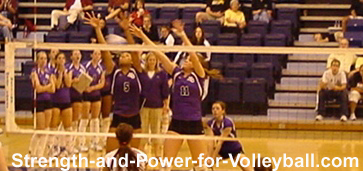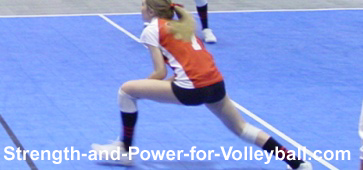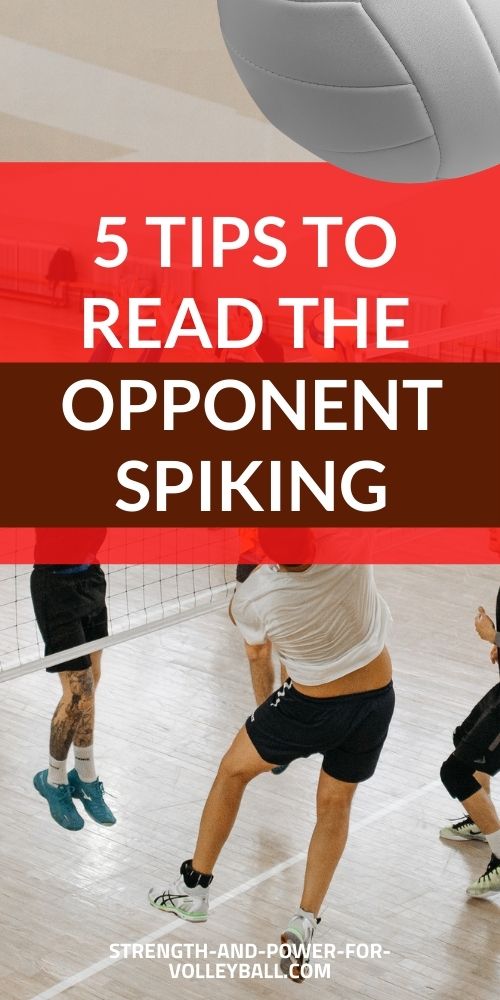Volleyball Dig Strategies
This is the fundamental strategy to make volleyball digs...
- Set up around the block
- Read the hitter
- Dig to the target
Position around the block
Teammates usually decide ahead of time how they are going to defend a hitter.
The blockers need to communicate with the defense about who is blocking what (line or angle) and where on the court the defense is going to be positioned.
Volleyball Dig Strategies for Reading the Attacker
-
Know the hitters tendencies
Know where the hitter likes to swing hard and know the hitters favorite shots. -
Watch the setter
Know if the setter is front row and if they like to attack on the second ball. As the pass travels to the setter, watch for any signs that setter is going to attack. Even if the setter is back row, they can still dump the ball. The most easily readable setter attacks are when the setter turns their body facing the net and sets or hits the ball over. The other is when the setter plays the ball with only one arm raised (usually an open hand tip or throw). -
Watch the hitter
Watch the hitter's shoulders. The direction the hitter is facing is the most likely direction they are going to hit. -
Watch the hitters arm swing
The elbow dropping is often a good clue they are going to hit an off speed shot. -
Watch the hitters approach
If they don't take a quick aggressive approach like they normally would, they probably aren't going to hit a hard driven ball.
Expect the ball to be hit your way
As the hitter is
approaching, expect them to hit the ball hard your way. It is so easy to
get caught by surprise by a hard hit. Always focus expecting a hard hit
first, then play the shot second.
Be Ready for the Tip
When your opponents are hitting, they have only 2 options. They are either going to swing hard or hit a shot (cut shot, roll shot, tip, etc.). You've got to defend the hard hit first, but also be ready for a shot. As soon as you can tell they aren't going to swing hard, be ready to move.
Common characteristics of hitters that hit off speed shots...
-
Taking a slower or unusual approach
Often a hitter may decide before they even approach that they aren't going to swing. Watching for an unusually approach (an approach that isn't hard and fast) will often help in reading the hitter. -
Dropping the elbow before the arm swing
A slow arm swing or dropping the elbow is a good sign a hitter will tip or roll the ball. -
Having to adjust the approach
The set may be farther off or tighter than expected. A lot of times, inexperienced hitters will adjust their approach and just try and keep the ball in play to avoid making a hitting error.
Faster Defense
Great defense players are all about learning to react spontaneously to new situations.
The key to playing great defense is hustling and beating the ball to its destination.
There are numerous ways to get to the ball...
- Sprinting
- Taking quick steps
- Falling
- Diving
- Rolling
- Sprawling
- Jumping
At the very least, get the ball up
As a defensive player, the most important thing is to get to the ball and keep it in play. If you do at least get the ball up, there's still a chance you will win the rally.
When playing defense, always remember to...
- Start with your body weight on your toes so you are ready to move quickly
- Expect the ball is coming your way
- Always try to dig the ball to a target
Developing various volleyball dig skills will better your chances of making great defensive plays.
Develop a defensive mindset
Good defensive teams force attacking errors by using strategies that wear down and frustrate their opposing attackers.
To be successful, players need to develop defensive skills along with effective strategies for blocking.
If you enjoyed these tips and would like to keep it close to you at any time, just save this pin to your Pinterest Volleyball Training Board.
Volleyball Dig Related Pages
Tips for Playing Smart DefenseVolleyball › Volleyball Strategies › Volleyball Dig


